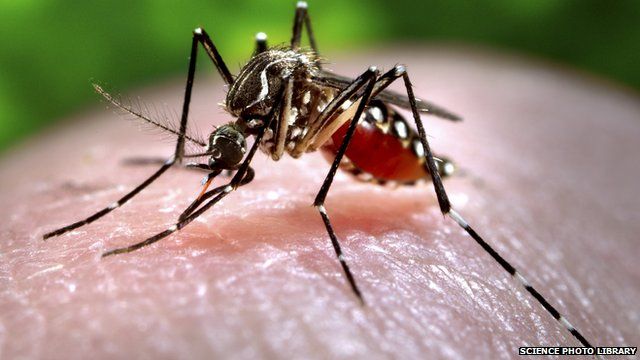-
1 September 2015
- From the section Health

A new method of applying insecticide to netting has proved 100% effective against some strains of mosquito, an international study reports.
The electrostatic coating allows the netting to carry much higher doses of insecticide.
In experiments, the coating killed off many more mosquitoes than usual.
Dutch researchers, writing in Proceedings of the National Academy of Sciences, say this could help control diseases such as malaria.
Insecticide resistance in mosquitoes has become a significant problem in many parts of the world where malaria is endemic.
It is thought that water-based spray insecticides and bed nets, which often contain low levels of insecticide, don’t always kill the mosquitoes, allowing them to develop resistance.
In this study, researchers from the Netherlands used a charged surface, originally developed for trapping airborne pollen, and applied insecticide to it.
The long-lasting electrostatic charge allowed high levels of insecticide to stick fast to the netting, giving the mosquitoes a lethal overdose when they came into contact with the surface – even for just a few seconds.
The technique was tested on different strains of mosquito in South Africa, Tanzania and at a lab at the Liverpool School of Tropical Medicine.
The research team found that the electrostatic coating of insecticide killed more mosquitoes than other nettings and, for certain insecticide-resistant mosquitoes, was 100% effective.
Conventional nettings kill fewer than 10% of mosquitoes, the study said.
Marit Farenhorst, who led the research, from In2Care at Wageningen University in the Netherlands, said the coating could be used on screens on windows and doors around the home, on curtains and walls, and in mosquito traps and wall ventilation tubes in homes.
“It’s a new way of trying to target and contaminate mosquitoes,” she said.
She also said the new method would be suitable for a number of different types of chemical insecticide.
However, she said the coating was probably not suitable for bed nets because people regularly touch and wash them so the insecticide would come off over time.

